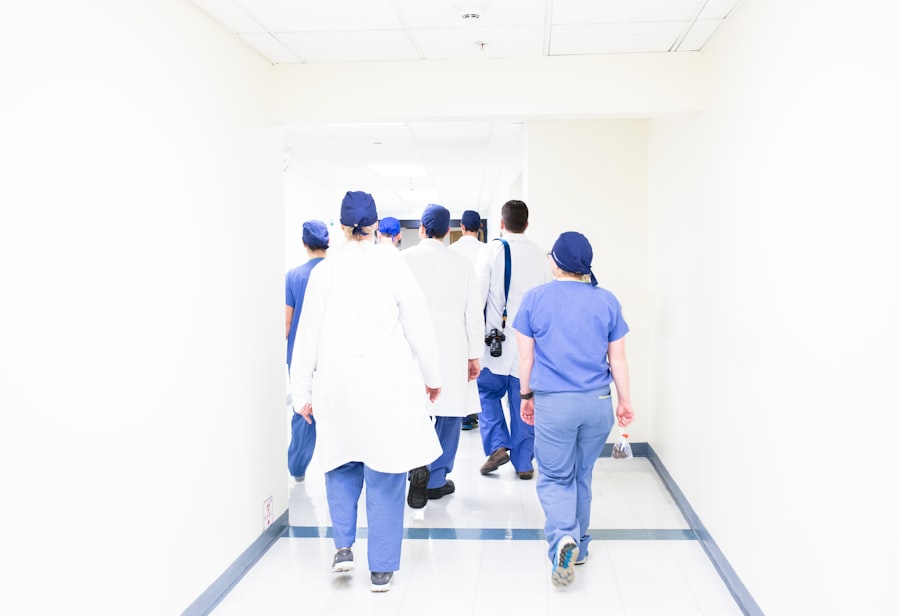Post-treatment care is a crucial aspect of your recovery journey, regardless of the type of medical procedure you have undergone. Whether you have had surgery, undergone a medical intervention, or completed a course of treatment, the days and weeks following your procedure are vital for ensuring optimal healing and minimizing complications. Understanding the importance of post-treatment care can empower you to take an active role in your recovery, leading to better outcomes and a smoother transition back to your daily life.
As you embark on this recovery phase, it is essential to recognize that your body has undergone significant changes. The healing process requires time, patience, and attention to detail. By adhering to the guidelines provided by your healthcare team and being mindful of your body’s signals, you can facilitate a more effective recovery.
This article will explore various aspects of post-treatment care, including pain management, wound care, medication management, dietary considerations, activity guidelines, follow-up appointments, and recognizing signs of complications.
Key Takeaways
- Post-treatment care is essential for recovery and healing after medical procedures.
- Managing pain and discomfort is important for patient comfort and well-being.
- Proper wound care and dressing changes are crucial for preventing infection and promoting healing.
- Medication management is necessary for controlling pain and preventing complications.
- Following dietary restrictions and maintaining proper nutrition can aid in the healing process.
Managing Pain and Discomfort
One of the most immediate concerns you may face after treatment is managing pain and discomfort. Pain is a natural response to medical procedures, and it can vary in intensity depending on the type of treatment you received. It is essential to communicate openly with your healthcare provider about your pain levels so they can recommend appropriate pain management strategies tailored to your needs.
This may include prescribed medications, over-the-counter pain relievers, or alternative therapies such as heat or cold applications. In addition to medication, there are several non-pharmacological methods you can employ to alleviate discomfort. Techniques such as deep breathing exercises, meditation, or gentle stretching can help reduce tension and promote relaxation.
You might also find comfort in engaging in light activities that distract you from the pain, such as reading or watching your favorite shows. Remember that everyone’s pain tolerance is different; what works for one person may not work for another. Therefore, it’s crucial to explore various options and find what best suits you.
Wound Care and Dressing Changes
Proper wound care is essential for preventing infections and promoting healing after any surgical procedure or treatment that involves incisions or open wounds. Your healthcare provider will likely give you specific instructions on how to care for your wound, including how often to change dressings and what products to use. Following these guidelines closely is vital for minimizing the risk of complications.
When changing dressings, ensure that you wash your hands thoroughly before touching the wound area. Use sterile materials as instructed and avoid touching the wound itself with your fingers. If you notice any unusual signs such as increased redness, swelling, or discharge from the wound, it’s important to contact your healthcare provider immediately.
Keeping the area clean and dry will help facilitate healing and reduce the likelihood of infection. For more information on wound care, you can visit the Mayo Clinic’s website.
Medication Management
| Metrics | 2019 | 2020 | 2021 |
|---|---|---|---|
| Medication Adherence Rate | 75% | 78% | 80% |
| Medication Errors | 120 | 110 | 100 |
| Medication Reconciliation | 85% | 88% | 90% |
Medication management is a critical component of post-treatment care that requires your active participation. After your procedure, you may be prescribed medications to manage pain, prevent infection, or address other specific needs related to your recovery. It’s essential to take these medications exactly as directed by your healthcare provider.
Missing doses or altering the schedule can hinder your recovery process. In addition to prescribed medications, you should also be aware of any over-the-counter medications you may be taking. Some medications can interact negatively with others, so it’s crucial to keep an updated list of all medications and supplements you are using.
If you have any questions or concerns about your medication regimen, don’t hesitate to reach out to your healthcare provider for clarification. They can provide guidance on potential side effects and interactions, ensuring that you are well-informed about what you are taking.
Dietary Restrictions and Nutrition
Nutrition plays a significant role in your recovery process. After treatment, your body requires adequate nutrients to heal effectively. Depending on the nature of your procedure, you may have specific dietary restrictions or recommendations that you need to follow.
Incorporating a balanced diet rich in vitamins and minerals can significantly enhance your healing process. Focus on consuming whole foods such as fruits, vegetables, lean proteins, and whole grains.
Staying hydrated is equally important; drinking plenty of water will help flush out toxins and support overall bodily functions. If you have any dietary restrictions due to allergies or other health conditions, consult with a nutritionist or your healthcare provider for personalized advice on how to meet your nutritional needs during recovery.
Activity and Exercise Guidelines

Following Your Healthcare Provider’s Guidelines
After undergoing treatment, it’s natural to wonder when you can return to your regular activities or exercise routine. However, it’s crucial to approach this aspect of recovery with caution. Your healthcare provider will likely give you specific guidelines regarding physical activity based on the type of treatment you received.
Gradually Increasing Intensity
In general, it’s advisable to start with light activities such as walking or gentle stretching before gradually increasing intensity. Listening to your body is key during this phase. If you experience pain or discomfort while engaging in certain activities, it’s essential to stop and reassess.
Avoiding Setbacks and Promoting Healing
Pushing yourself too hard too soon can lead to setbacks in your recovery process. Instead, focus on building strength and endurance gradually over time. Incorporating short walks into your daily routine can help improve circulation and promote healing without overexerting yourself.
Follow-Up Appointments and Monitoring
Follow-up appointments are an integral part of post-treatment care that should not be overlooked. These visits allow your healthcare provider to monitor your progress and address any concerns that may arise during your recovery period. It’s essential to attend all scheduled appointments and communicate openly about any symptoms or changes you experience.
During these follow-up visits, your healthcare provider may perform assessments or tests to evaluate how well you are healing. They can also provide valuable feedback on your pain management strategies, wound care practices, and overall recovery progress. If you have questions or uncertainties about any aspect of your recovery, don’t hesitate to bring them up during these appointments; they are an opportunity for you to gain clarity and reassurance.
Signs of Complications and When to Seek Medical Attention
While most recoveries proceed smoothly, it’s essential to be vigilant for signs of complications that may require immediate medical attention. Familiarize yourself with potential warning signs such as excessive bleeding, severe pain that doesn’t improve with medication, fever, or unusual swelling around the surgical site.
If you notice any concerning changes in your condition or if something doesn’t feel right, trust your instincts and reach out to your healthcare provider promptly. It’s always better to err on the side of caution when it comes to your health. Your healthcare team is there to support you throughout your recovery journey and can provide guidance on what steps to take if complications arise.
In conclusion, post-treatment care is a multifaceted process that requires attention and commitment from you as a patient. By managing pain effectively, adhering to wound care protocols, following medication guidelines, maintaining proper nutrition, engaging in appropriate physical activity, attending follow-up appointments, and being aware of potential complications, you can significantly enhance your recovery experience. Remember that healing takes time; be patient with yourself as you navigate this important phase of your health journey.
After receiving laser hair removal treatment, it is crucial to follow post-treatment care instructions to ensure optimal results and minimize any potential side effects. For more information on the importance of post-treatment care, you can check out this informative article on inlaserhairremoval.com. This article provides valuable tips and guidelines on how to properly care for your skin after laser hair removal treatment, helping you achieve smooth and hair-free results. Remember, following post-treatment care instructions is essential for the success of your laser hair removal treatment.
FAQs
What are post-treatment care instructions?
Post-treatment care instructions are guidelines provided by healthcare professionals to patients after they have undergone a medical procedure or treatment. These instructions are designed to help patients recover effectively and minimize the risk of complications.
Why are post-treatment care instructions important?
Post-treatment care instructions are important because they help patients understand how to take care of themselves after a medical procedure. Following these instructions can help prevent infections, reduce pain, and promote faster healing.
What are some common post-treatment care instructions?
Common post-treatment care instructions may include guidelines for wound care, medication management, physical activity restrictions, dietary restrictions, and follow-up appointments with healthcare providers.
How should patients follow post-treatment care instructions?
Patients should carefully read and understand the post-treatment care instructions provided by their healthcare provider. It is important to follow the instructions closely and ask any questions if there is any confusion.
What should patients do if they have questions about their post-treatment care instructions?
If patients have any questions or concerns about their post-treatment care instructions, they should contact their healthcare provider for clarification. It is important to fully understand and follow the instructions for optimal recovery.







